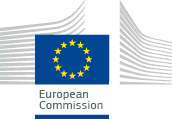PROJECT DESCRIPTION
BACKGROUND
Human activities can have a significant negative impact on the environment, particularly by affecting the global biogeochemical cycles of carbon, nitrogen and phosphorus. Water supplies to urban areas and subsequent sanitation and wastewater systems even when conventional treatment occurs produce enormous punctual loadings (point sources pollution) of nitrogen and phosphorus. Such water pollution leads to eutrophication, resulting in a loss of plant and animal species, along with negative impacts on water for human consumption and other purposes. Furthermore, marine ecosystems are similarly affected by excess nutrients and thus the impact of eutrophication extends beyond inland waters to coastal and oceanic regions, too. Advanced wastewater treatment plants (WWTP) are thus vital to remove these nutrients and meet the main objective of the Urban Waste Water Treatment Directive (91/271/EEC). This directive established minimum requirements for wastewater collection and treatment depending on the size of the agglomeration and the characteristics of the discharge area. Water pollution caused by wastewater persists despite three decades of attempts to address the problem and despite the requirements of the abovementioned directive. Current concentrations of orthophosphate and nitrate are still above background or natural levels.
OBJECTIVES
The LIFE + TL-BIOFER project aimed to address the environmental problem of wastewater produced by small- and medium-size urban areas. To meet this aim, the project planned to implement two actions. First, to develop and demonstrate a wastewater treatment plant using a Twin-Layer (TL) system: an advanced nutrient removal technology based on cultivation of microalgae in biofilm. In this technology, microalgae are immobilised by self-adhesion on a wet, microporous ultrathin substrate (the substrate layer). A second layer, which consists of a macroporous fibrous structure (the source layer), provides and distributes the growth medium.
Second, the project planned to address the shortage of phosphorus by developing and testing biofertilisers derived from the remaining microalgae. The fertiliser would meet high agronomical standards of sustainable farming as well as the requirements of current and future EU regulations.
RESULTS
Despite several challenges, the LIFE+ TL-BIOFER project demonstrated the feasibility of an advanced nutrient removal technology by using microalgae immobilised culture in a Twin-Layer system, in order to address the environmental problem of point source pollution from small- and medium-size urban areas. It installed a twin layer microalgae cultivation system for nitrogen and phosphorus removal in the WWTP, EL Viso-Villaralto at Crdoba, Spain. The standard method used in this WWTP for phosphorus removal is chemical precipitation using ferric chlorine. After a screening process carried out by the University of Cologne, a selected strain of Scenedesmus sp. was chosen for inoculation of the Twin-Layer prototype modules due to its high growth rate (12.2 gm/d) and its nutrient uptake capacity. The study was conducted under optimal light and temperature conditions at laboratory scale with 33 isolated strains, including diatoms, chlorophyll and cyanobacteria. Wastewater from the El Viso Villaralto WWTP was employed as substrate.
Before prototype inoculation, Scenedesmus sp. strain was cultivated in one-litre bioreactors and then in tubular bioreactors of 20 l working volume. A synthetic medium containing nutrients was employed as substrate. Finally, Twin-Layer prototype layers were inoculated with 3 g of microalgae under different storage conditions to evaluate the differences in nutrient uptake and microalgae growth: fresh microalgae, lyophilised microalgae and microalgae stored at 4 C. The system treated 6 m3 per day of an effluent from a secondary treatment consisting of two rotational contactors for organic matter removal (bio-discs). In order to control and maintain stable humidity and temperature conditions, the prototype was installed inside a polycarbonate greenhouse with a weather station and a Zenital window, both connected by a control unit module.
By October 2016 a complete line was operating with wastewater from the bio-disc (before the secondary decanter) with a growth surface of 36 m. Overall, 2,400 m3 of wastewater were treated throughout the project at a daily rate of 6 m3 over 400 days of operation. Although the prototype did not operate under optimal conditions, the average elimination percentages reached 55% for nitrogen and 40% for phosphorus (on average). Some 46-51 kg of nitrogen (objective 248-276 kg) and 4.4-4.9 kg of phosphorus (objective 16.5-18.3 kg)were captured.
The foreseen microalgae bio-based fertilisers tests were reduced from two seasons to one season, and microalgae in lyophilised form was produced because it can be stored and preserved without altering its properties. A total of 714 kg of fresh microalgae was produced, instead of 900 kg foreseen in the proposal. At the end of the project 1 520 kg of bio-based fertilisers were produced. The formulation was based on the use of pure microalgae powder and in admixtures rations with growing media and different compost at microalgae rates ranging from 1% to 4%. Lessons learned include:
In terms of environmental impacts, the clean profile of the wastewater in very small and small populations and WWTPs due to the predominant urban character of the discharges provides a clean microalgae biomass suitable for the proposed reuse as biofertiliser. In this way the environmental problem of diffuse agricultural pollution from mineral fertilisers is also tackled through the substitution of chemical fertiliser by slow release organic microalgae biofertilisers, including the additional benefit biological fixation of atmospheric N2.
Specifically, these types of agglomerations in many cases are located in protected areas. In this context, the environmental requirements for wastewater treatment are more stringent to ensure the preservation of the ecological values of the area. The TL technology is especially useful in this scope.
Further information on the project can be found in the project's layman report and After-LIFE Communication Plan (see "Read more" section).

